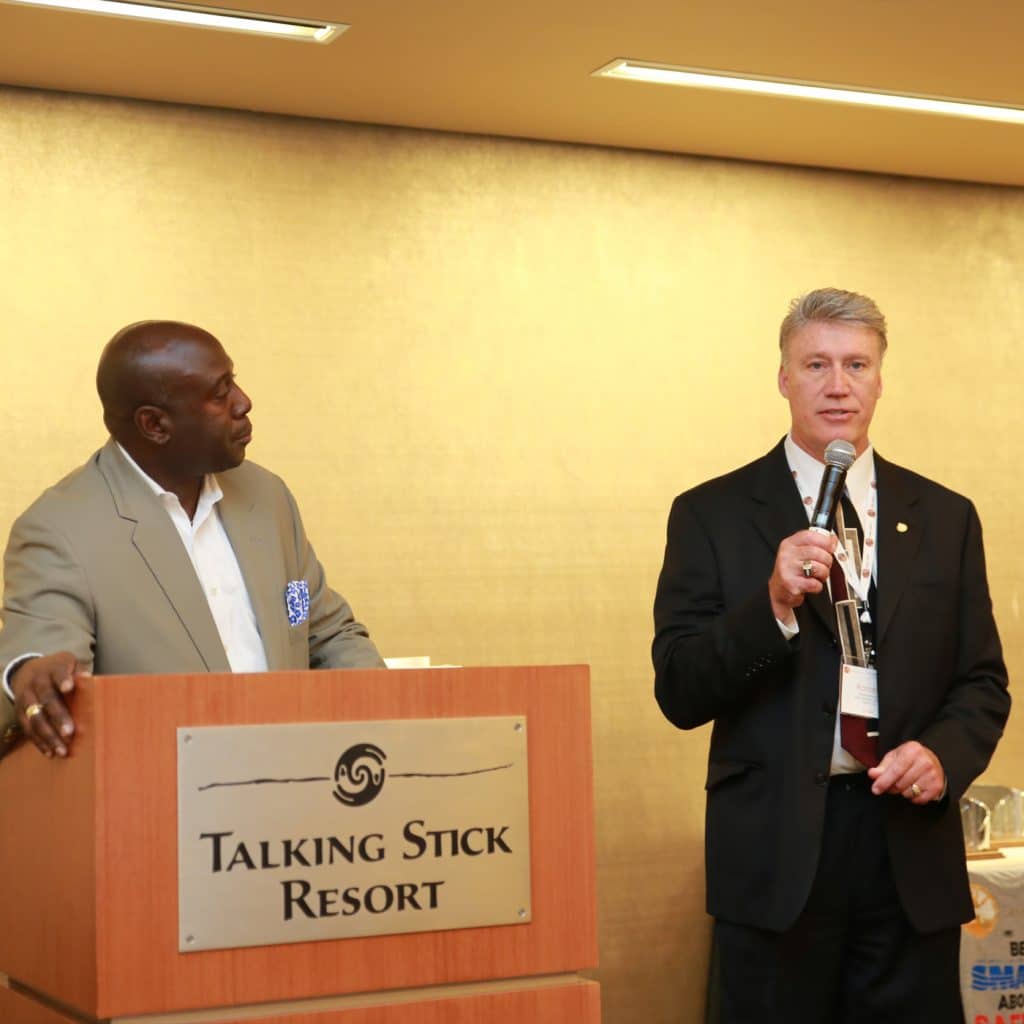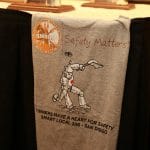

The conference’s second year was a continuation of last year’s discussion, “What is a Safety Champion?” said Randall Krocka, SMOHIT administrator.
“Our goal is to make safety as natural as breathing,” added Krocka during opening remarks. “We’re here to learn together and share ideas, because we’re all partners in keeping our people safe. It starts with leadership. This is a room full of leaders who take ownership of safety.”
During the keynote, participants worked together in a series of breakout sessions to discuss how to create a positive safety culture in the industry one contractor, and one training center at a time.
Ragain discussed the five rungs of the Safety Culture Ladder, from pathological, where safety is considered a burden and a nuisance, all the way up to generative, in which workers at all levels feel as if they are their “brother’s keeper.”
“We need to get to a place where people at all levels feel personally responsible for safety,” Ragain said. “Where the workforce is fully engaged. Where people take initiative to improve safety, even when their efforts go unrecognized. The thought process is, ‘We are never safe enough.’ It takes constant effort by everyone. And it all starts with leadership.”
Through the workgroup sessions, contractors, training coordinators, safety managers, and business agents and managers put their heads together to brainstorm ideas. One fact Ragain shared: people speak up only 39 percent of the time when they see an unsafe situation.
This led to an important question that teams were challenged to answer: How can leaders create a context in which people will be more likely to intervene during an unsafe situation?
“Sometimes it’s as simple as saying ‘Thank you for looking out for me,’ Ragain said. “Even if the person intervening is wrong, just saying that can drive the culture of intervention.”
“We’re working together,” added Kris Benson, an instructor at Local No. 66. “We all need to share in the responsibility of safety because it affects all of us.”
The conference opened with the annual Safety Champion Awards and recognition dinner. Winners honored for their efforts in safety include Tim Myres, apprenticeship and training trust at Local No. 20 in Indianapolis; Michael Sapien, full-time instructor at Local No. 359 in Phoenix, Arizona; Sheet Metal Workers Local No. 22 in Cranford, New Jersey; James Walton and Robert Dickamore from Superior Air Handling for the Mox Project in Aiken, South Carolina; Cindi Bell and Diane Patterson from California Sheet Metal in El Cajon, California; and John Santivasci, Jr. CMC Sheet Metal in Capitol Heights, Maryland.
Winners of the second Safety Design Contest also were acknowledged, including Jeff King from Local No. 33 in Toledo, Ohio; George Plane from Local No. 67 in San Antonio, Texas; and Chris Caricato from Local No. 206 in San Diego.
Superior Air Handling won for the second consecutive year for its work at the Mixed Oxide Facility, known as The Mox Project, at the Savannah River Site. The company has reached a milestone of more than 1.75 million safety man-hours, which amounts to seven years without a lost-time injury. The company expects to hit 2 million this spring.
“These awards are for the guys. Without them, I don’t have a job,” said James Walton, safety manager and certified health and safety technician. “They’re the reason I get up and go to work every day.”
Through the labor-management partnership, Krocka plans to “think of this as an ongoing conversation” during the year that will continue through to next year’s conference, he said.
“We need to recognize this is an area where labor and management share the same goals. We all want to see our members go home every night with their fingers and limbs intact,” said Rich McCleese, general secretary/treasurer for the International Association of Sheet Metal, Air, Rail and Transportation (SMART) workers. “We all win when our members are safe and employed.”
Part of the initiative is SMART MAP (Member Assistance Program), a training program that educates members on how to help their peers find professional help for their problems and addictions. During training, members also are taught what avenues are available to them as union members, said Chris Carlough, SMART education director.
In the last two years, 250 members have undergone training. The remaining session for 2016 is Nov. 7 – 10 in San Diego.
Programs like SMART MAP and the Safety Champions Conference have the same goal, said Michael McCullion, SMACNA director of safety and health.
Related News
- SMART-TD Applauds FRA and DOT for Strengthening Cross-Border Rail Safety Protections
- Michigan sheet metal worker details impact of canceled project
- Regional Training Seminars coming to St. Paul, Baltimore in 2026
- SMART leaders train to bargain better contracts in Atlanta
- Chicago-area SMART members win big with transit funding bill
- Transit Funding Boost Proposed by SMART-TD Backed Bill
- California SMART-TD Brother Killed on the Job
- Union Mourns the Loss of Brother Charles Harrison
- FRA Issues Grade-Crossing Safety Advisory
- Amtrak To Give SMART-TD Members Holiday Bonuses